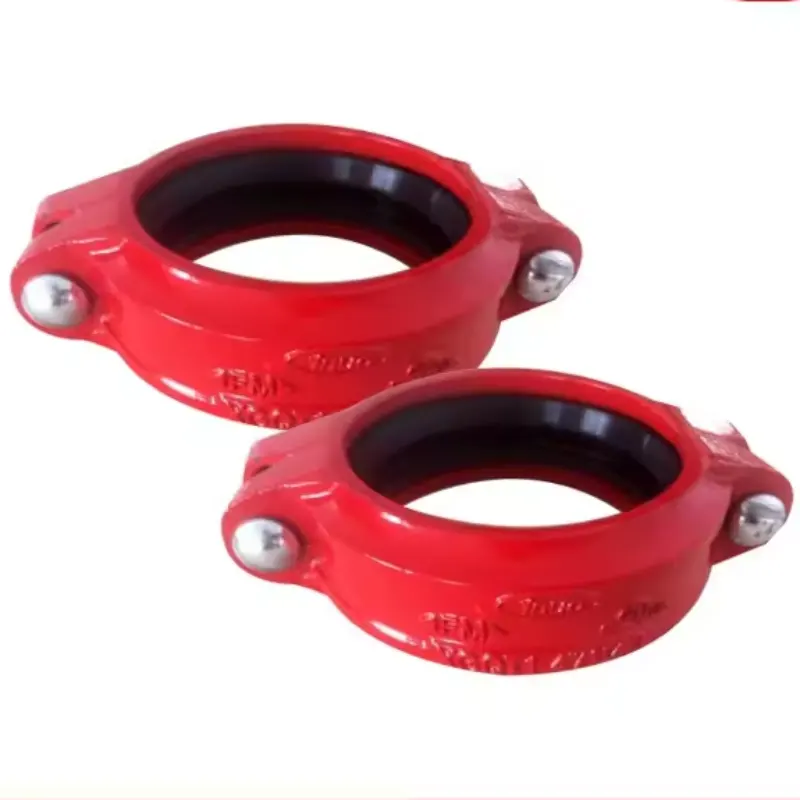Rigid couplings serve as essential elements in linking two shafts that are in alignment, enabling the transmission of power between them without requiring torsional flexibility. These couplings maintain shaft alignment and provide proper bearing support. Let’s explore the different rigid coupling types and their applications:
Flange Ridgid Couplings
- Description: Flange ridgid couplings find extensive application in joining shafts of similar or varying diameters. These couplings comprise two distinct flanged hubs, each bored and keyed to accommodate its respective shaft, connected through a pattern of bolts.
- Applications:
Pressurized piping systems and funneling frameworks.
Heavy-duty applications due to their robust design.
Large shafts where alignment accuracy is crucial (e.g., marine applications).
- Advantages:
Simple structure.
Easy assembly and maintenance.
High torque capacity.
Torsional stiffness.
Zero backlash.
Utilize gaskets to prevent leakage.
Rigid Threaded Coupling
- Description: Rigid threaded couplings comprise two hubs with threading that can be screwed onto the ends of rigid conduits. Typically crafted from cast steel, they are coated with electroplated zinc to resist corrosion. These couplings are engineered to link threaded conduits securely, establishing a robust connection between sections. They can also be used with chase nipples and other connectors to attach threaded conduits to electrical junction boxes or enclosures.
- Applications:
Joining threaded rigid conduits or IMC conduits together.
Bonding threaded conduits to electrical junction boxes or enclosures.
Converting flexible metal conduits to EMT (Electrical Metallic Tubing) thinwall, rigid conduit, or liquid-tight conduits.
Sleeve / Muff Couplings
- Description: Sleeve couplings are the simplest type of rigid couplings. They consist of a hollow cylindrical sleeve keyed to the shafts being connected. A gib-headed key couples the drive shaft to the sleeve and the driven shaft.
- Applications:
Where shafts are perfectly aligned.
Close alignment scenarios.
- Advantages:
Easy to design and assemble.
Cost-effective.
Suitable for moderate torque transmission.
Commonly made of cast iron.
Sleeve Couplings with Taper Pins
Similar to sleeve couplings but with taper pins for added security.
Clamp / Ribbed / Split Muff / Compression Couplings
- Description: These couplings use clamps or ribs to secure the sleeve to the shafts.
- Applications:
Where disassembly is required for maintenance.
Moderate torque transmission.
Common in industrial machinery.
- Advantages:
Easy to assemble and disassemble.
Ring Compression Couplings
- Description: These couplings use a ring to compress the sleeve onto the shafts.
- Applications:
Moderate torque transmission.
Used in various machinery and equipment.
Set Screw Couplings
- Description: Set screw couplings have set screws that secure the sleeve to the shafts.
- Applications:
Light-duty applications.
Where precise alignment is not critical.
Spline Couplings
- Description: Spline couplings have splines (grooves) on the sleeve and shafts for torque transmission.
- Applications:
Automotive drivetrains.
Machinery requiring precise alignment and high torque capacity.

To sum up, rigid couplings are utilized across a spectrum of applications including power transmission systems, conveyor systems, pumping systems, automotive drivetrains, and beyond. They provide reliability, simplicity, and cost-effectiveness in diverse industrial settings.
